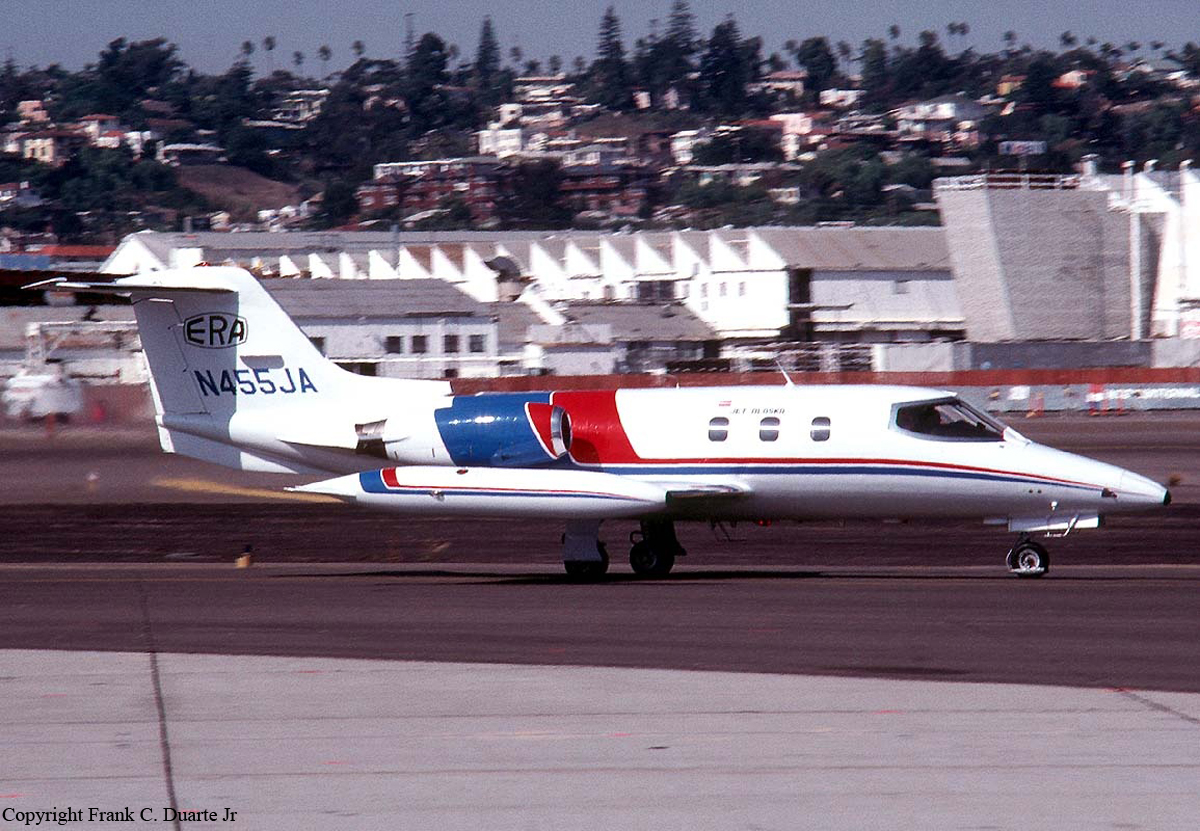Zone
Crash of a Learjet 24XR in Gulkana: 3 killed
Date & Time:
Aug 20, 1985 at 0205 LT
Registration:
N455JA
Survivors:
No
Schedule:
Anchorage - Gulkana
MSN:
24-300
YOM:
1974
Crew on board:
2
Crew fatalities:
Pax on board:
1
Pax fatalities:
Other fatalities:
Total fatalities:
3
Captain / Total hours on type:
801.00
Aircraft flight hours:
6645
Circumstances:
During a night arrival, the flight was on an instrument approach to the Gulkana Airport when radio contact with the aircraft was lost. A search was initiated and the wreckage was found 7.4 miles north of the terminal VOR on the 330° radial. The inbound course for the VOR runway 14 approach was on the 315° radial. An on-scene exam revealed the aircraft was tracking inbound when it collided with trees, crashed and burned about 2.4 miles before reaching the final approach fix. Both engines were operating during impact and both had ingested considerable tree material. No preimpact mechanical failure was evident. The captain and 1st officer were currently responsible for flying both the Learjet and DHC-7 aircraft. This was the captain's 1st day of work after returning from a vacation trip to Hawaii (approximately 1-1/2 weeks). The 1st officer had an adequate period for crew rest prior to reporting for work; however, he had previously been working a varied schedule. The operator repeatedly shifted pilots from 14 cfr 135 rest/duty requirements to those of 14 cfr 121. All three occupants were killed.
Probable cause:
Occurrence #1: in flight collision with object
Phase of operation: approach - iaf to faf/outer marker (ifr)
Findings
1. (f) weather condition - rain
2. (f) light condition - dark night
3. (c) ifr procedure - improper - pilot in command
4. (c) remedial action - not attained - copilot/second pilot
5. (f) fatigue (circadian rhythm) - copilot/second pilot
6. (f) fatigue (flight schedule) - company/operator management
7. (f) object - tree(s)
8. (c) minimum descent altitude - not maintained
----------
Occurrence #2: in flight collision with terrain/water
Phase of operation: descent - uncontrolled
Phase of operation: approach - iaf to faf/outer marker (ifr)
Findings
1. (f) weather condition - rain
2. (f) light condition - dark night
3. (c) ifr procedure - improper - pilot in command
4. (c) remedial action - not attained - copilot/second pilot
5. (f) fatigue (circadian rhythm) - copilot/second pilot
6. (f) fatigue (flight schedule) - company/operator management
7. (f) object - tree(s)
8. (c) minimum descent altitude - not maintained
----------
Occurrence #2: in flight collision with terrain/water
Phase of operation: descent - uncontrolled
Final Report:

Crash of a Piper PA-31-350 Navajo Chieftain near Valdez: 2 killed
Date & Time:
Feb 1, 1975
Registration:
N54734
Survivors:
No
Schedule:
Kenai - Gulkana
MSN:
31-7405256
YOM:
1974
Crew on board:
1
Crew fatalities:
Pax on board:
1
Pax fatalities:
Other fatalities:
Total fatalities:
2
Captain / Total hours on type:
5.00
Circumstances:
En route from Kenai to Gulkana, the pilot failed to realize his altitude was insufficient when the twin engine airplane crashed on a snow covered mountain located in the region of Valdez. SAR operations were quickly suspended due to risk of avalanches. Few days later, it was confirmed that both occupants did not survive the accident.
Probable cause:
The pilot misjudged altitude, causing the aircraft to stuck the ground. The following contributing factors were reported:
- Improper in-flight decisions,
- High obstructions,
- Flew into rising terrain.
- Improper in-flight decisions,
- High obstructions,
- Flew into rising terrain.
Final Report:
Crash of a Rockwell Aero Commander 560A in Galena: 1 killed
Date & Time:
Nov 23, 1973 at 1135 LT
Registration:
N12317
Survivors:
Yes
Schedule:
Fairbanks - Gulkana - Galena - Nome
MSN:
560-243
YOM:
1955
Crew on board:
1
Crew fatalities:
Pax on board:
5
Pax fatalities:
Other fatalities:
Total fatalities:
1
Captain / Total hours on type:
6.00
Circumstances:
The twin engine airplane was completing a flight from Fairbanks to Nome with intermediate stops in Gulkana and Galena. On approach to Galena, the pilot encountered poor weather conditions with low ceiling, fog and snow falls reducing the visibility to 1,000 feet. On final under VFR mode, he was unable to locate the runway when he realized he was facing the tower. He initiated a turn to avoid collision when he lost control of the airplane that crashed near the runway. All five passengers were seriously injured while the pilot was killed.
Probable cause:
Improper flight decisions on part of the pilot. The following factors were reported:
- The pilot continued VFR flight into adverse weather conditions,
- Evasive maneuver to avoid collision,
- The pilot failed to maintain flying speed,
- Low ceiling, fog and snow,
- Inadequate preflight preparation,
- Improperly loaded aircraft,
- No weather briefing received,
- Low level VFR approach to IFR airport,
- Turned to avoid tower and stalled,
- Passengers obtained a partial weather briefing,
- Over maximum gross weight.
- The pilot continued VFR flight into adverse weather conditions,
- Evasive maneuver to avoid collision,
- The pilot failed to maintain flying speed,
- Low ceiling, fog and snow,
- Inadequate preflight preparation,
- Improperly loaded aircraft,
- No weather briefing received,
- Low level VFR approach to IFR airport,
- Turned to avoid tower and stalled,
- Passengers obtained a partial weather briefing,
- Over maximum gross weight.
Final Report:

